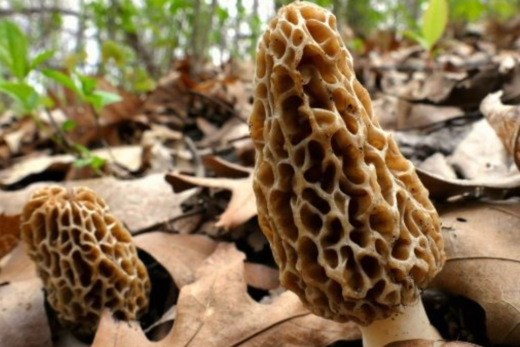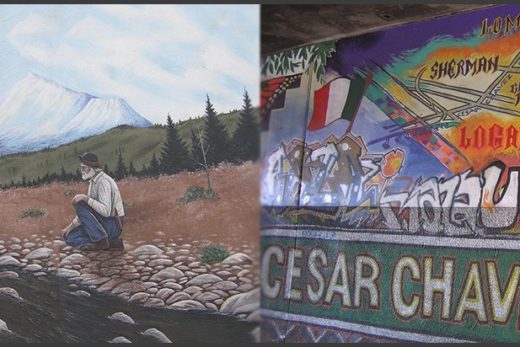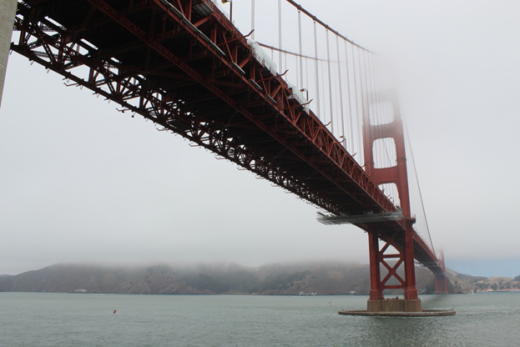Continue east on First Street past the 101 Freeway to Boyle Avenue.
Stop #13: Mariachi Plaza, Boyle Heights (1817 E. 1st Street):
This neighborhood was home to families with Spanish surnames in the 1880s, but streetcar system extensions helped change it into a white-collar suburb. By the 1920s, the approximately 70,000 residents were mostly Jewish and by the 1940s, the population had more than doubled over a few decades. A large working-class immigrant Latino population changed it again during the mid-to-late 1900s, replacing the white flight that typically drained resources from similar urban neighborhoods. It didn’t help when the freeway bifurcated this community. By 1990, the more than 90,000 residents here were more than 90% Latino. This neighborhood links with East L.A. as the center of Latino culture in the U.S., while East L.A. has competed with Latino businesses on Broadway in downtown LA. By 2020, about half of the population in L.A. County was considered Latino or Hispanic. That’s about five million people.

Boyle Heights is now facing controversies and struggles that are all too familiar around L.A.: how to improve living and working environments without destroying the culture and neighborhood with runaway gentrification that also threatens to price out working class families. In yet another unexpected connection to previous stops on our tour, during construction of the Gold Line, the MTA discovered a Chinese cemetery here that dated back to the late 1800s. The 108 sets of remains represented a throwback to the days of forced segregation of Chinese workers, even after they died.

Colorful Mariachi Plaza and its stage has become a world-famous L.A. attraction that celebrates the mariachi movement. Though mariachi may now be a Mexican music and culture tradition that is considered an institution, mariachi music has become rooted in the U.S., and L.A. is an important anchor. It evolved its own identity here after mariachi groups began migrating to L.A. during the mid-1900s. It was further revived during the late 1900s until it became familiar to Californians of all ethnic groups. Musicians congregate here, especially on weekends, to be hired for parties and events where they join to play the traditional songs that they all have learned. During our tours, we have hired them to play for us and we have never been disappointed. It helps to know a little Spanish if you’re looking for the best musicians.
There’s plenty to explore in this eclectic neighborhood, including the adjacent train station that connects East L.A. with the larger conurbation.


As you might expect, there are numerous excellent Mexican restaurants around this neighborhood to choose, with many different styles. Here, we highlight one that has an established history and happens to be just across the street from Mariachi Plaza and the Metro Station. It is another example of the many eateries that have left their imprints on L.A. cuisine and culture. This is an excerpt from the Boyle Heights section of the Angels Walk self-guided street tour that also helps to make this a special stop. (You might notice a reference to Chicano (male) or Chicana (female), considered by many Mexican Americans to recognize a more specific identity with their ethnicity, culture, and community, though others have used the terms to describe a movement):
“Casa Fina (formerly La Serenata de Garibaldi) 1842 E. 1st Street. Jose and Aurora Rodriguez opened the first La Serenata de Garibaldi location in Boyle Heights in 1985, specializing in their own Mexican family recipes. In 1995, they opened a second location in Rancho Park, and in 1998, a third location opened in Santa Monica. Then, after 32 years of thriving business, the original location abruptly closed in 2017. A few months later, on Cinco de Mayo, Josefina López stepped in with restaurateurs Alonzo Ricardo and Emmanuel Deleage to open a new destination restaurant called Casa Fina. López is known as the writer of Real Women Have Curves, founder of Casa 0101 (see page 24), and as a community activist—she also has culinary training from Le Cordon Bleu in Paris. Casa Fina welcomes guests into a vibrant and festive atmosphere filled with traditional and folk details, colorful art-filled walls, fresh authentic Mexican fare, and patroness López’s warmth and community spirit.”
From their web page, Josefina Lopez expresses how her restaurant survives within such a competitive market. She writes about her Casa Fina Restaurant and Cantina: “Our daily specials will be my opportunity to create with Chef Augustin special dishes and invent Chicana/o cuisine. I also want to have wine tasting events so the Boyle Heights community can come try our wines and learn about Mexican wines from the Valley of Guadalupe in Baja California where our wines come from. We want to support Mexican wines by serving them in our restaurant.” “Life is a fiesta, so wear bright colors, eat great food & dance the night away!”













